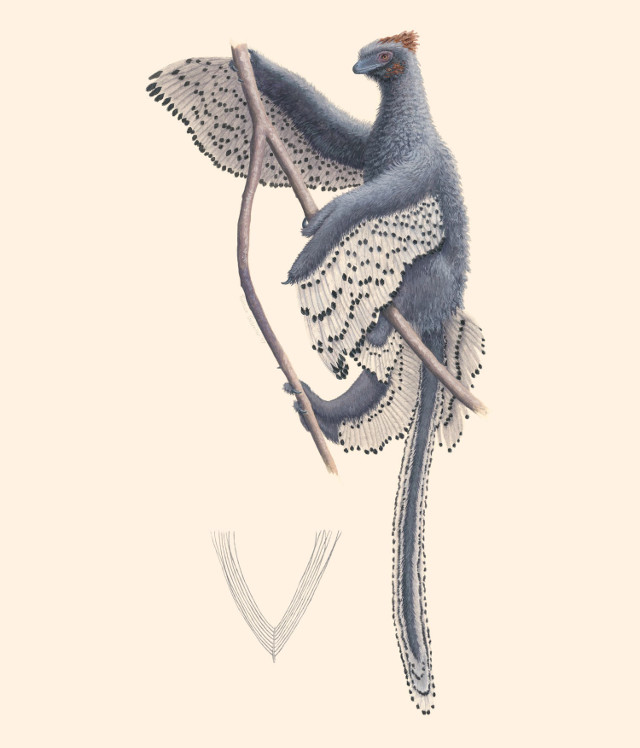
An article published in the journal “Palaeontology” describes a research on Anchiornis huxleyi, a small feathered dinosaur that lived about 160 million years ago in today’s China. Evan Saitta and Jakob Vinther of the British University of Bristol revealed new details on these animals’ plumage by examining a very well preserved specimen. Their conclusion is that this species had a fluffier look than the aerodynamic one of modern flying birds.
Anchiornis huxleyi’s fossils were discovered in the Tiaojishan Formation in the Liaoning Province, China, and described for the first time in 2009 by a team led by Chinese paleontologist Xu Xing. This species, with a size similar to that of a modern crow, was included in the group of paravians (Paraves), which includes various subgroups of winged theropod dinosaurs and their only descendants still existing today, birds.
Thanks to the discovery of some hundreds of specimens, some of which in excellent conservation conditions, in recent years it was possible to carry out in-depth studies on Anchiornis huxleyi’s appearance. For this reason, it’s the first species of the Mesozoic era of which it was possible to reconstruct the appearance almost completely. The fact that it’s a feathered dinosaur makes this work even more important for the information that these studies can provide on the evolution of birds.
In the case of a specimen, during the decay following its death some of its feathers came off its body before it got buried in the ground and the process of fossilization began. Thanks to this lucky event, it was possible to examine those feathers more simply, without the problem of having to try to distinguish their structure from those of the rest of their fossil bodies.
The researchers noted many differences between the plumage of Anchiornis huxleyi and that of modern birds. Compared to its present cousins, this little dinosaur was less aerodynamic, had a lower capacity to control its body temperature and was less water-repellent. Like other paravians, it had four wings.
In drawing the Anchiornis huxleyi’s reconstruction, the scientific illustrator Rebecca Gelernter worked with the authors of this new research. The colors were chosen following the results of studies of fossil pigments and also this small dinosaur’s body outline was drawn following the results of fossil examinations.
The result is an important part of this research because it was created not only as an artistic representation but as an attempt to reproduce Anchiornis huxleyi as faithfully as possible. For this reason, Rebecca Gelernter is credited among the authors of the article.
With this research, more than ever the appearance of an animal that lived in the Mesozoic era is considered important. This research for a faithful representation is an important part in the research on the evolution of birds, which among other things includes the reconstruction of the characteristics that evolved during that era in the various paravians.


Permalink